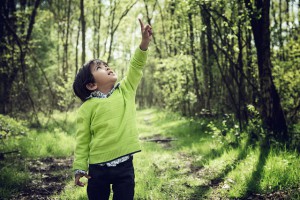What do you think of when you hear the term ‘learning environment’? Most of us think of school, or the typical classroom, seeing learning as a scheduled activity restricted to buildings and rooms dedicated to the practice. But what if we saw it differently? Better yet, what if students saw it differently? Many are now beginning to see learning in a different light, creating learning environments without limits that inspire students to learn the way they want, using it as a means of discovery and self-education. Limitless learning environments make it possible to learn anywhere, at any time, and any pace, and the best part is they’re easier than ever to create.
1. Allow Technology
Many are still making the mistake of banning technology from the learning sphere. Whether out of fear of distraction or lack of organization, choosing not to allow technology is a sure way to hinder the learning of 21st century students. As Matt Miller states in Ditch That Textbook, “When schools tell students to put technology away, it’s like asking a doctor to save a life with one hand tied behind his back.” In order to give students the education they need to survive and thrive in the digital age, it’s no longer helpful to use technology, it’s essential.
2. Make it Student-Centered
With more and more learning environments taking a student-centered approach, we’re beginning to see a shift from the restricted learning models of old. As David Kelly explains in his article, ‘Why Technology Belongs in the Classroom’, there is a real need to move away from the traditional lecture model as the “default delivery method for teaching.” Instead, many educators and schools are embracing student-centered models that involve students in how they learn, and adapt to their learning styles, habits, and needs.
3. Make it Mobile
While we’ve affirmed technology’s necessity for learning, finding the right tools is not always easy. But above all else, mobility is key. Mobile technology makes it possible to learn without restriction, at home, on the move, at any time, from any place. With the learning environment now moving with the learners, it’s better adapted to their lives, their habits, and their interests. With a mobile learning platform like Fishtree, students are ensured every resource and lesson tailored to them, when, and where they need it.
4. Make it Personalized
A personalized learning environment is widely considered the ideal, offering every student the one-to-one experience that each deserves. Within a self-paced, student-driven space, learning is limitless and students are motivated to test their skills. Through adaptive learning platforms that specialize in personalization, PLE’s are guaranteed success with students actively pursuing their own personal learning paths, generating personalized resources, and tracking their own progress as they reach their goals.
5. Make it Collaborative
Collaboration, whether teacher-student or peer-to-peer, has always been a fundamental practice in every learning environment. With increasing emphasis being placed on the 5 C’s of 21st Century Education, collaboration lies at the heart of every attempt to create a limitless learning environment. Technology-enhanced learning brings collaboration front and center as BYOD, project-based, problem-based, flipped, and blended learning become core components of the curriculum. Using social media to extend the learning outside the classroom and school, students and teacher can benefit from a limitless learning environment based on open collaboration and communication.
Like what you’ve read? Create a learning environment without limits today with the 21st century learning platform, bringing one-to-one instruction to every classroom.
About the author:
Lorna Keane specializes in language teaching and has taught in second and third-level institutions in several countries. She holds a B.A in languages and cultural studies and an M.A in French literature, theory and visual culture. Follow her on Twitter or connect on LinkedIn.
Image credits: Brad Flickinger / CC BY 2.0
